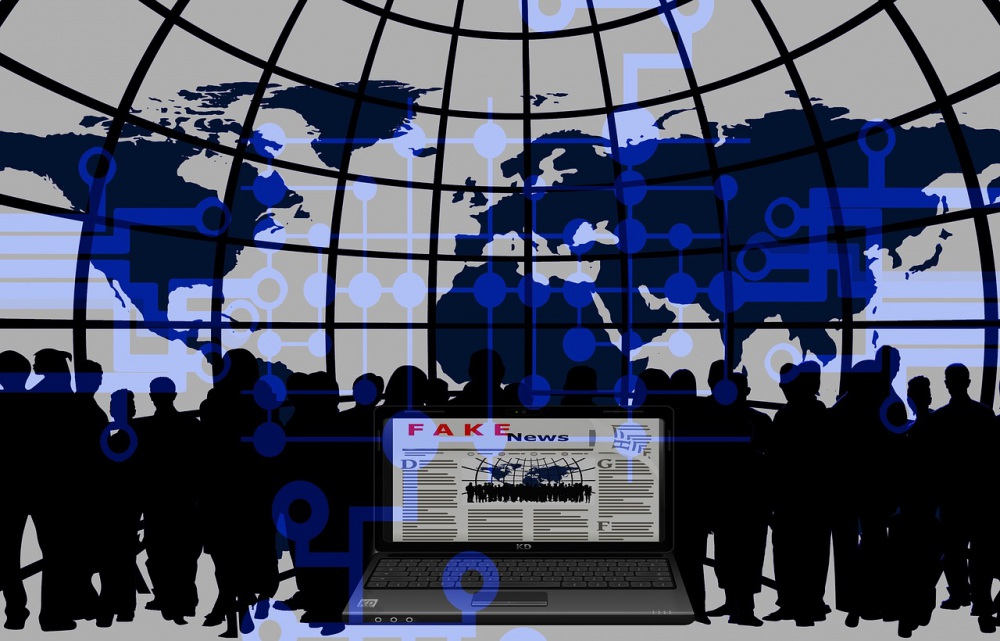This post was written by Margaret Nina Miller, an intern
with NTI’s Scientific and Technical Affairs Program. Miller was formerly a
Global Nuclear Policy Program intern with NTI and graduated from the College of
William & Mary – University of St Andrews Joint Degree Programme.
Every weekday
at about 5:00 pm, loudspeakers in Japanese towns and cities loudly play folk
music or other tunes. Japan’s bosau musen or ‘disaster wireless’ loudspeakers are
placed in town squares around the country to relay information in the event of
natural disasters or large-scale emergencies. Many countries have loudspeakers in public
areas or broadcast alerts to televisions
and phones to notify citizens of an emergency with loud and actionable
information.
However, the information ecosystem today is
far different than when President Truman set up CONELRAD, the first
emergency response system for radios, when President Kennedy mandated the
system be updated to an Emergency
Broadcast System, or even when the system was automated and improved to our
current Emergency
Alert System (EAS) in the 1990s. Today, public
debate and information sharing—including emergency alerts and fact
checking—inevitably involves social media.
Crisis informatics
As part of our work reducing nuclear
and biological risks, the Nuclear Threat Initiative is exploring
how social media may foment crises or contribute to escalation. Officials and
citizens alike get information from social media during a crisis, and information
spreads quickly through these platforms, facilitating rumors and adversarial
disinformation campaigns that could make pandemics or nuclear
crises more dangerous. At the same time, responding to the social
media challenge must recognize the value these platforms provide in spreading
timely information to individuals around the world.
Social media mediates how we
learn about these threats from official government sources, exchange
information with other citizens and non-governmental sources, and verify what
actions to take. In an emergency, members of the public often turn
to social media to supplement
traditional media and official communications. Social media provides emotional
support for those experiencing a crisis, identifies legitimate individuals such
as reporters and volunteers, and provides relief information and weather
updates—a complex open exchange of information called crisis
informatics.
Unfortunately, official alert
systems have proven to be unreliable at times. The EAS in the United States
depends on Primary Entrance Point (PEP) forwarding stations that receive a
presidential message and are required to relay the signal to radio and cable
providers. In the most recent national
EAS test on September 27, 2017, none of the stations in Puerto Rico and the U.S.
Virgin Islands reported receiving and forwarding the test message “due to post
hurricane infrastructure issues.” Hurricane Maria struck Puerto Rico on
September 20, 2017—a week before the EAS test, which may illustrate how
official information distribution can fail in a WMD crisis.
Filling in the gaps
The 2018 false alarm ballistic
missile warning in Hawaii demonstrates how social media can supplement failures
in official alert systems. The initial alert
of a “ballistic missile threat inbound” left individuals in a state of
uncertainty and anxiety for 38
minutes, while officials tried to resolve multiple technical
failures. Many Hawaiians first learned
that the ballistic missile alert was a false alarm by reading a tweet
from Congresswoman Tulsi Gabbard’s official account. Meanwhile, many Hawaiians reported
a desire for more actionable information, beyond the guidance to “seek
immediate shelter” provided in the EAS text.
An enduring challenge of EAS
message delivery is reaching vulnerable communities, including individuals with
disabilities, the elderly, and those who do not understand English. In their
article on communicating about the risks of bioterrorism, Marty McGough and
fellow researchers reported that vulnerable populations in North
Dakota wanted information in case of an incident of terrorism but often did not
know where to find it. Solutions to these challenges
“are not supported by the current EAS system or are so expensive as to be
inaccessible to most.” Ideally, social media could fill the gaps of official
communications to reach vulnerable communications more quickly and reliably.
However,
social media may amplify rumors and disinformation during WMD crises. Disinformation,
through ‘fake news’ or artificial intelligence-generated ‘deepfakes,’ is a
pervasive problem on sites like Facebook and Twitter. Social media, particularly Twitter, was a primary method
for the Center for Disease Control and Prevention (CDC) to communicate during the
2014 ‘Ebola panic,’
but public distrust in official sources made correcting disinformation
difficult. Researchers have found that false stories spread
six times faster than true ones and are 70 percent more likely to be retweeted.
Further, Twitter bots amplify
true and false stories about equally, indicating that humans—not bots—are to
blame for the fake news proliferation.
Conclusions
Social media platforms have
started to address concerns about ‘fake news’ with commercial content
moderation mainly provided by human
moderators. However, these sites deal with a tsunami of
user-generated content to moderate (YouTube reported an
hour of video uploaded every minute in 2014). Machine learning may help
automate the simple elements of moderation, such as
blacklisting certain words and banning threatening content, but verifying the
truthfulness of reporting during a WMD crisis is a difficult task—for officials
and citizens.
The possibility of a nuclear or
biological disaster should be considered in any plans for social media
platforms to improve their crisis response
options. The digital ‘town square’ is a vital place for information sharing and
emergency alerts, but participation is equal, potentially anonymous, and international.
These characteristics pose a challenge to crisis informatics, particularly in
the scenario of a WMD threat. Yet, as social media participation increases
around the world, the choice is not whether these platforms should
be a part of crisis communication—the question is how they can improve.




